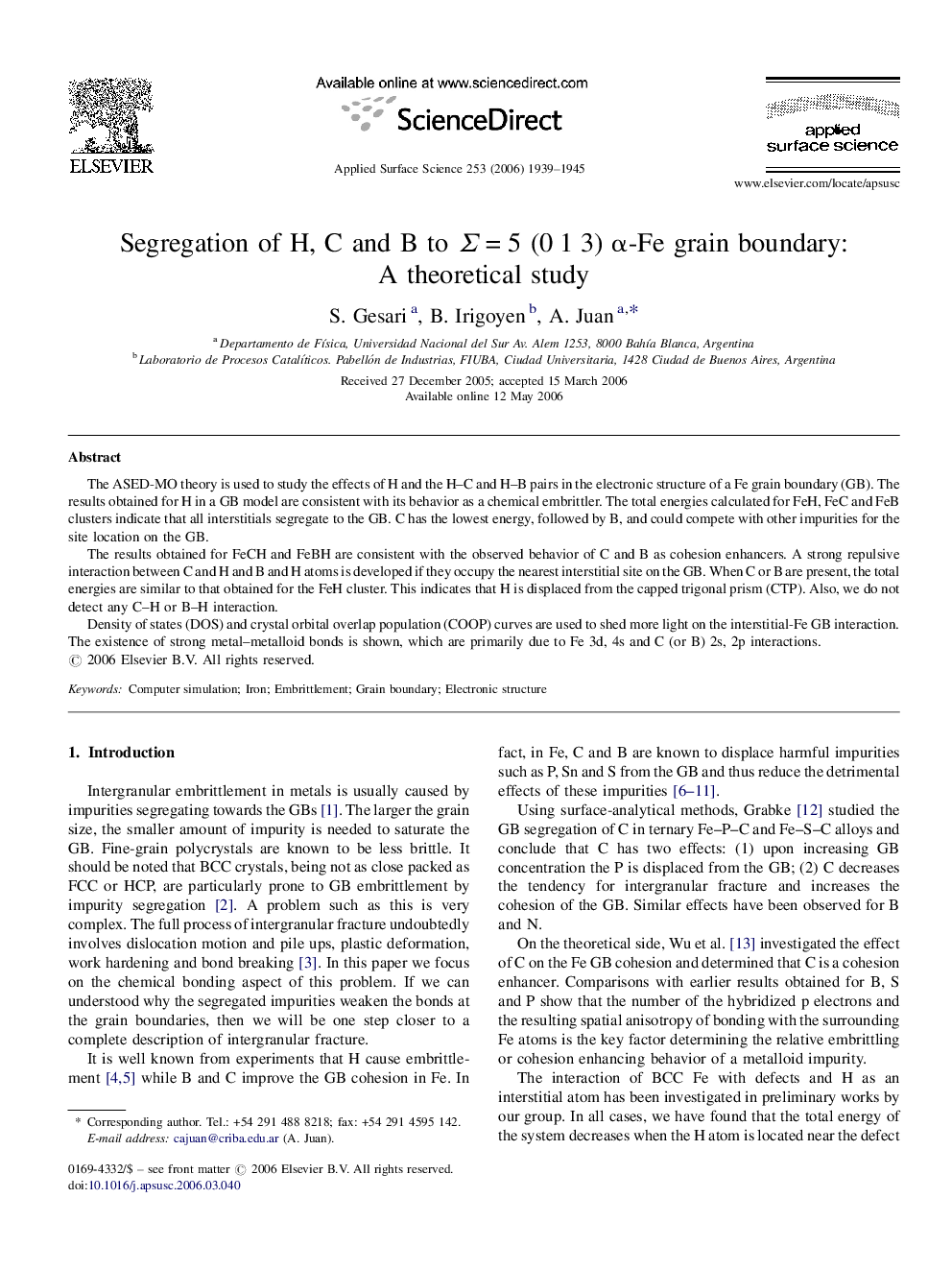| Article ID | Journal | Published Year | Pages | File Type |
|---|---|---|---|---|
| 5370043 | Applied Surface Science | 2006 | 7 Pages |
The ASED-MO theory is used to study the effects of H and the HC and HB pairs in the electronic structure of a Fe grain boundary (GB). The results obtained for H in a GB model are consistent with its behavior as a chemical embrittler. The total energies calculated for FeH, FeC and FeB clusters indicate that all interstitials segregate to the GB. C has the lowest energy, followed by B, and could compete with other impurities for the site location on the GB.The results obtained for FeCH and FeBH are consistent with the observed behavior of C and B as cohesion enhancers. A strong repulsive interaction between C and H and B and H atoms is developed if they occupy the nearest interstitial site on the GB. When C or B are present, the total energies are similar to that obtained for the FeH cluster. This indicates that H is displaced from the capped trigonal prism (CTP). Also, we do not detect any CH or BH interaction.Density of states (DOS) and crystal orbital overlap population (COOP) curves are used to shed more light on the interstitial-Fe GB interaction. The existence of strong metal-metalloid bonds is shown, which are primarily due to Fe 3d, 4s and C (or B) 2s, 2p interactions.
